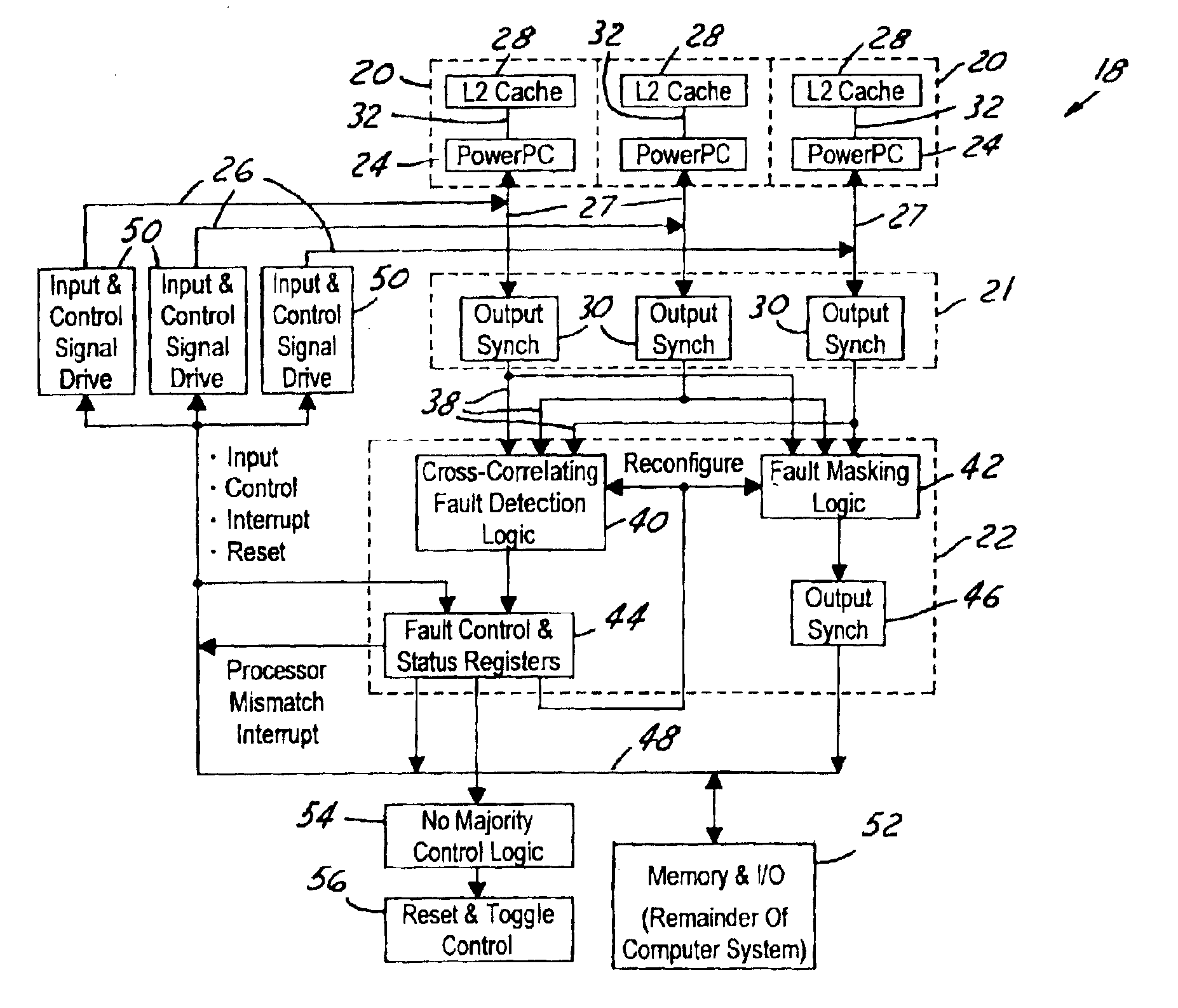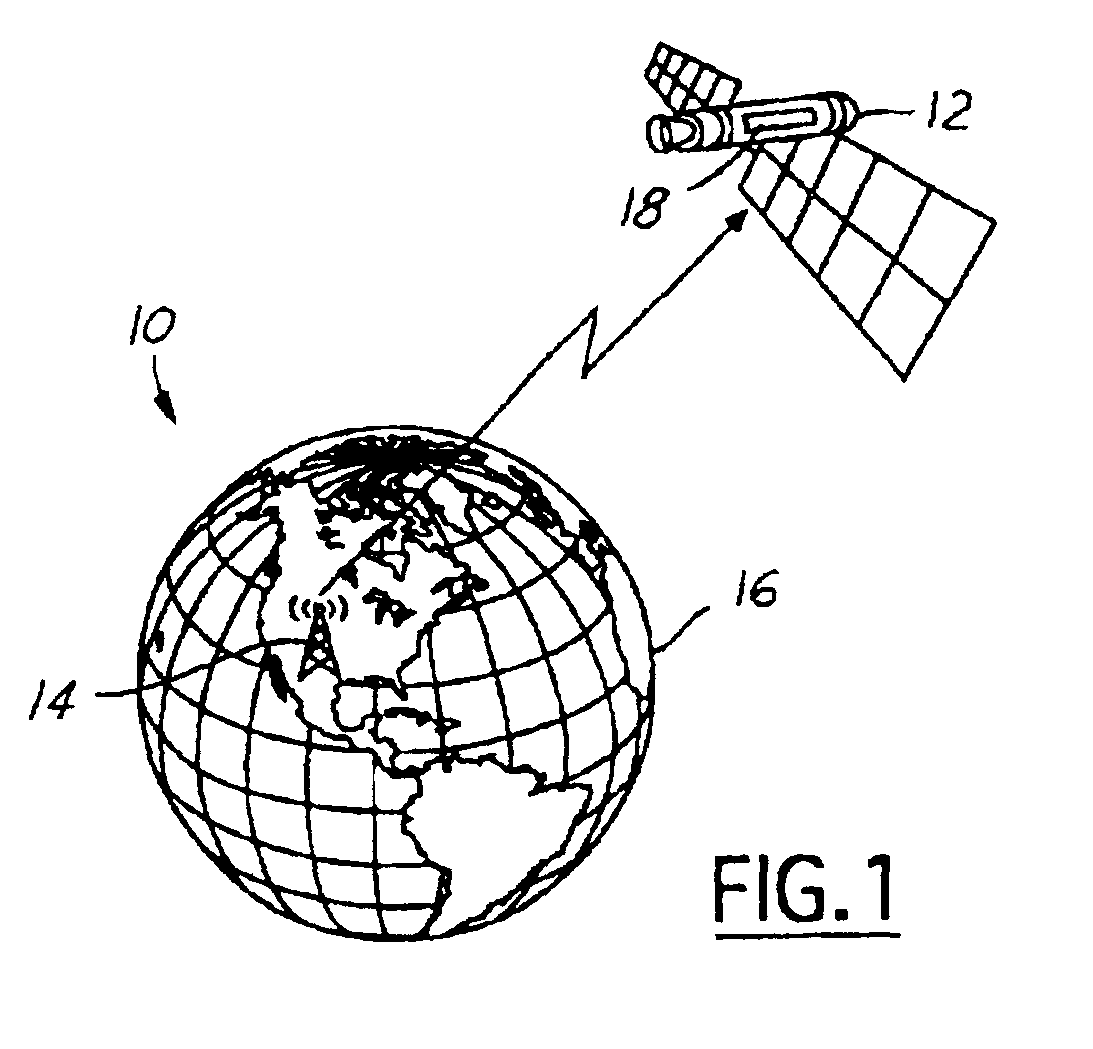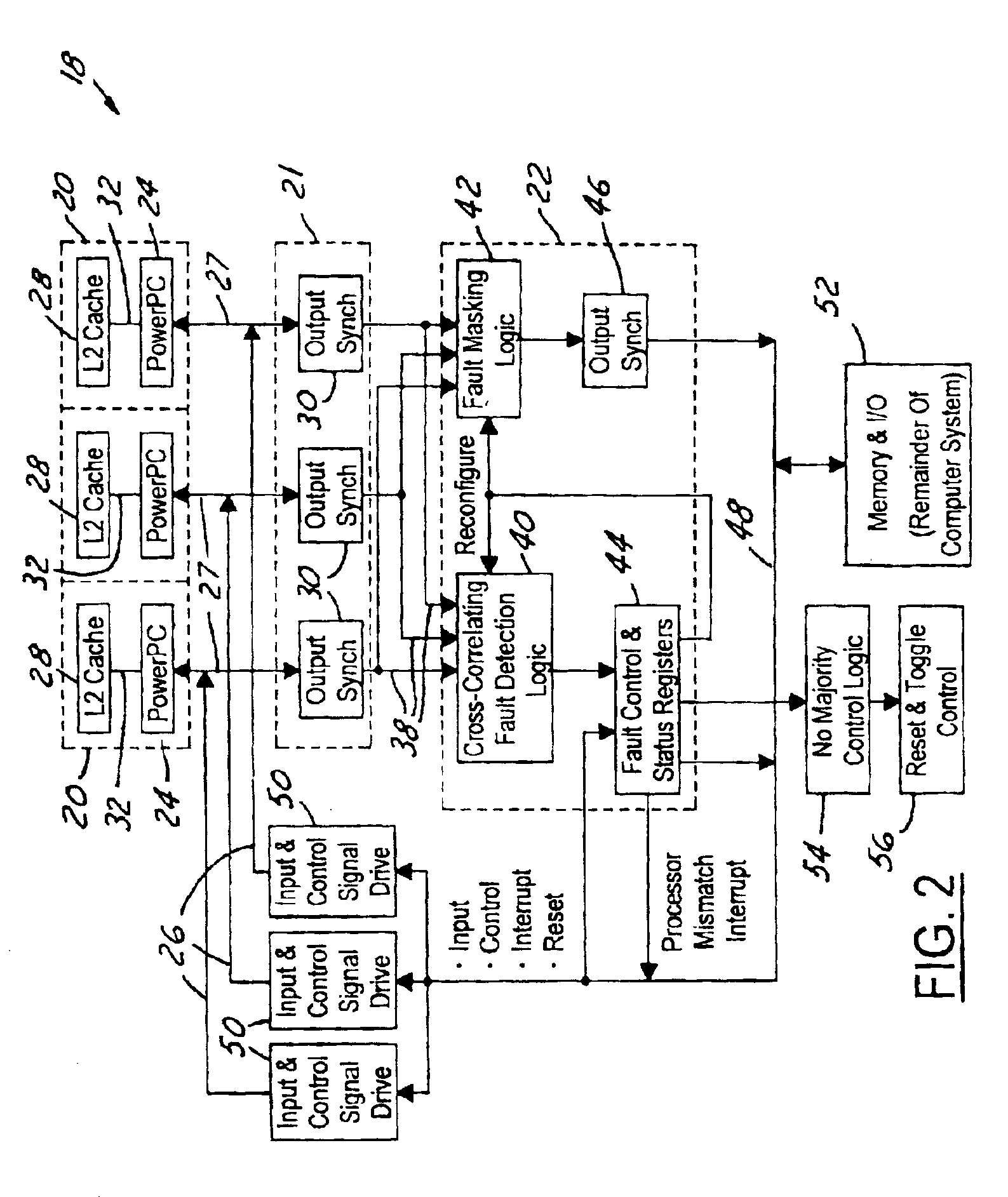Fault tolerant processing architecture
a processing architecture and fault technology, applied in the field of fault tolerance computer processors, can solve the problems of short and long-term degradation of semiconductor devices used in computers, and the need for systems that are protected from faults or failures becomes critical. , to achieve the effect of restoring normal computational behavior, preventing erroneous computer output, and preventing the propagation of faults and failures through the computer system
- Summary
- Abstract
- Description
- Claims
- Application Information
AI Technical Summary
Benefits of technology
Problems solved by technology
Method used
Image
Examples
Embodiment Construction
[0029]Referring to FIG. 1, a satellite system 10 in which a fault tolerant digital processing system in accordance with the present invention might be utilized is illustrated. The satellite system 10 is comprised of one or more satellites 12 in communication with a ground station 14 located on the Earth 16. Each satellite 12 contains one or more fault tolerant digital processing system 18.
[0030]The satellite system 10 is responsible for ensuring correct processor operation while being subjected to radiation. Integrated circuits used in computers and other electronic systems aboard space vehicles are susceptible to a phenomenon known as Single Event Upset, or SEU. Single Event Upset occurs when radiation, passing through an integrated circuit, deposits stray charges in the device, causing one of its registers or memory elements to be disrupted. Several fault prevention techniques can be utilized to reduce the number of SEUs that occur in the integrated circuits used aboard space vehi...
PUM
 Login to View More
Login to View More Abstract
Description
Claims
Application Information
 Login to View More
Login to View More - R&D
- Intellectual Property
- Life Sciences
- Materials
- Tech Scout
- Unparalleled Data Quality
- Higher Quality Content
- 60% Fewer Hallucinations
Browse by: Latest US Patents, China's latest patents, Technical Efficacy Thesaurus, Application Domain, Technology Topic, Popular Technical Reports.
© 2025 PatSnap. All rights reserved.Legal|Privacy policy|Modern Slavery Act Transparency Statement|Sitemap|About US| Contact US: help@patsnap.com



